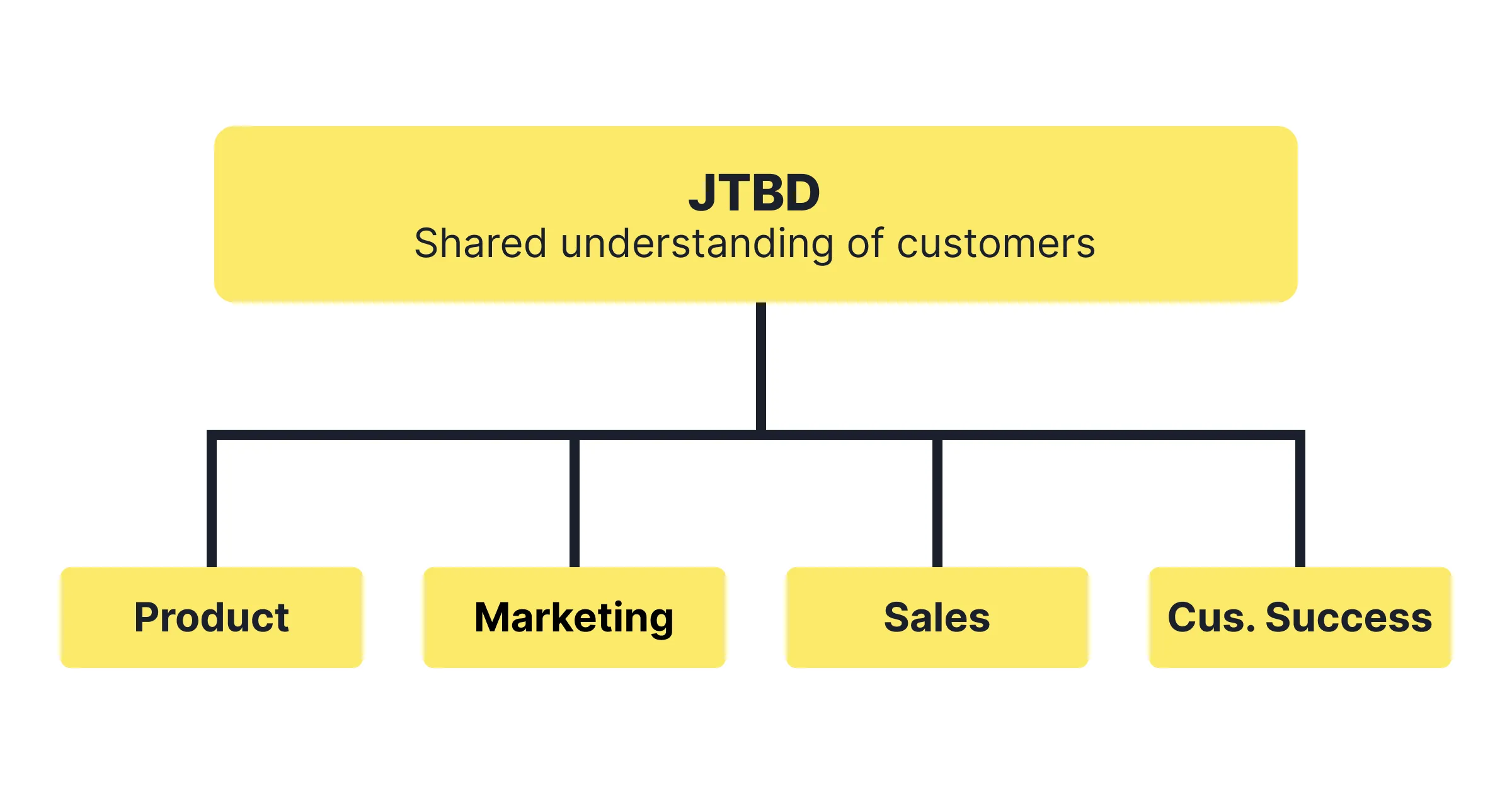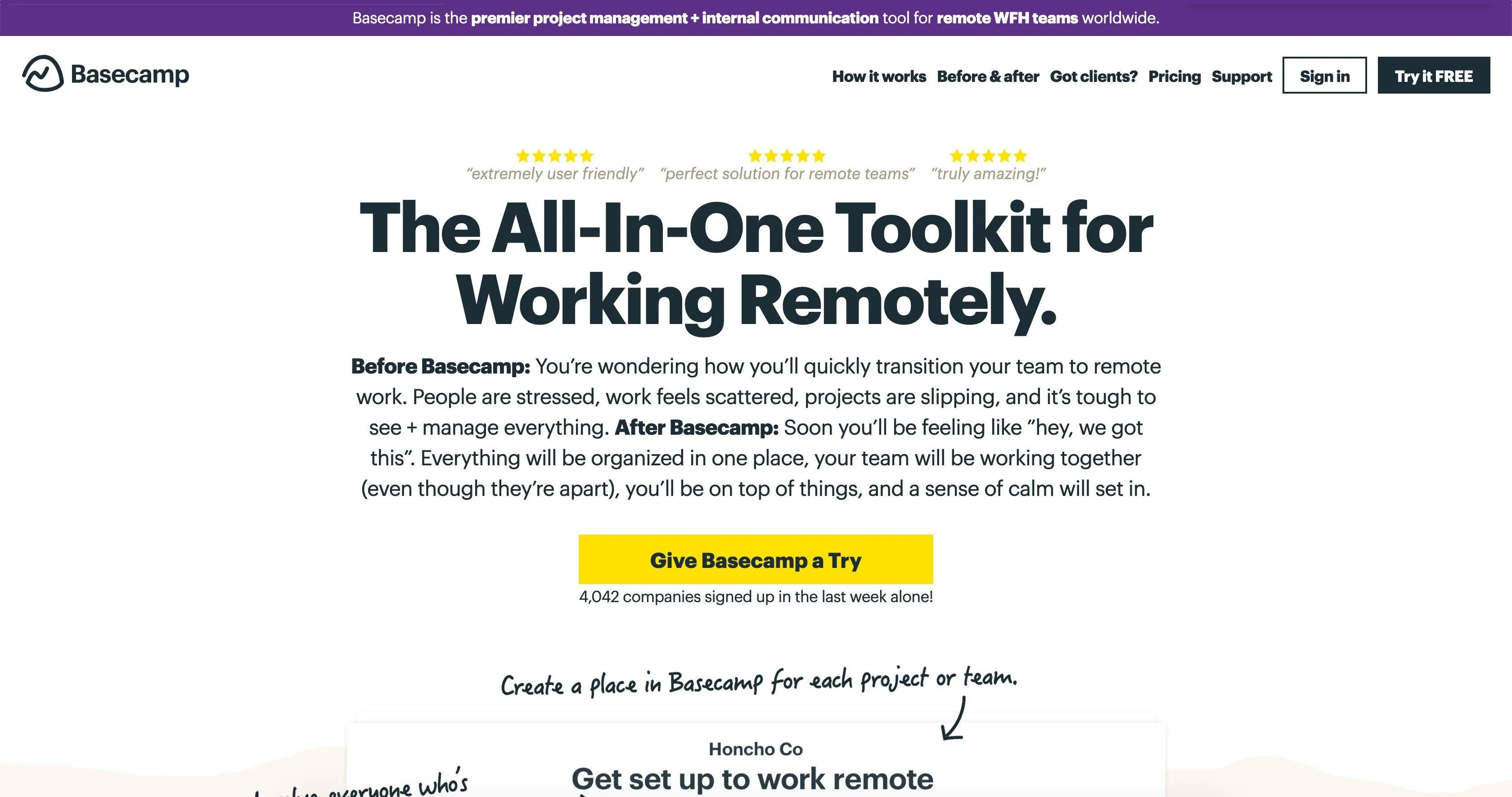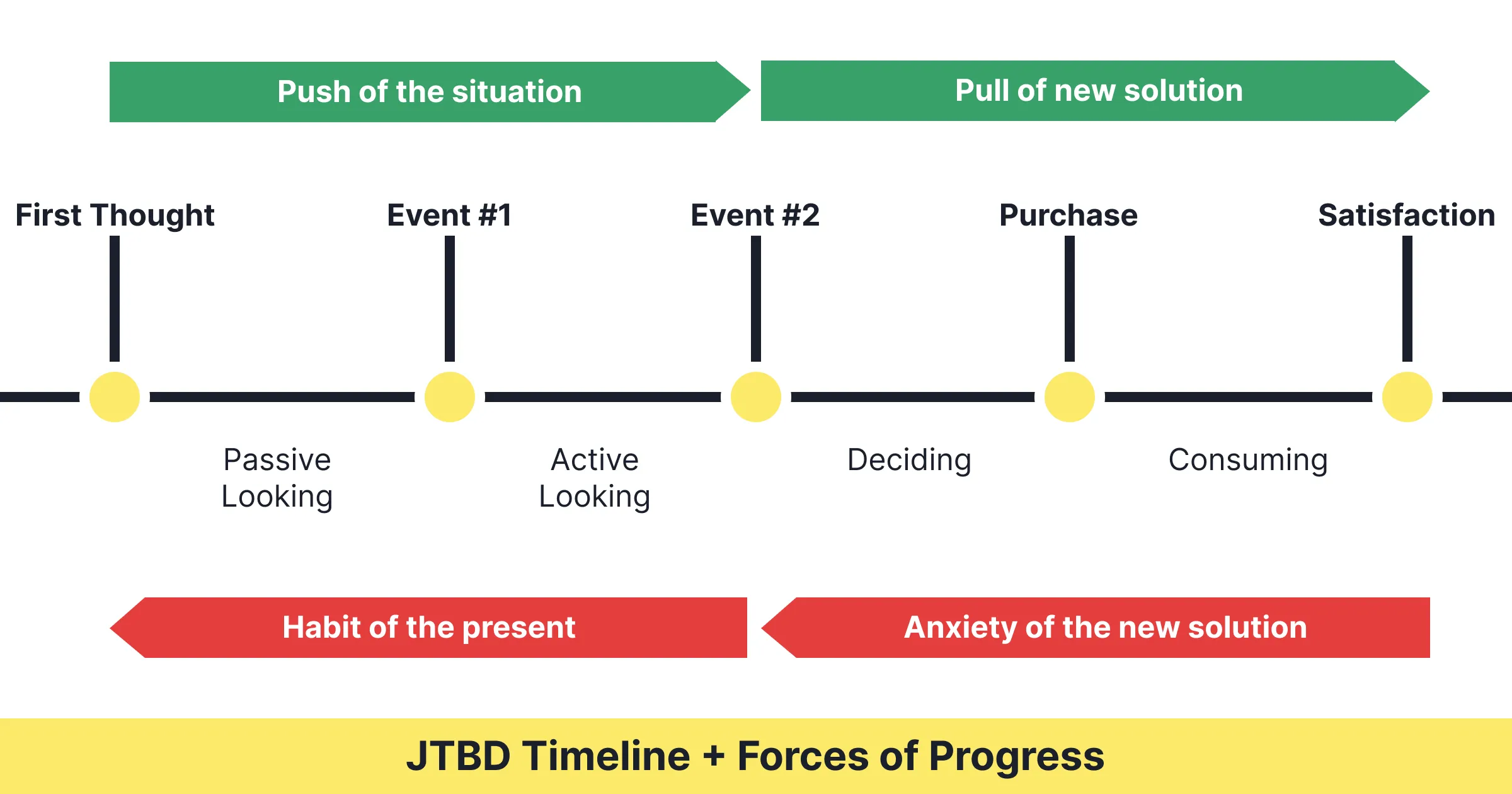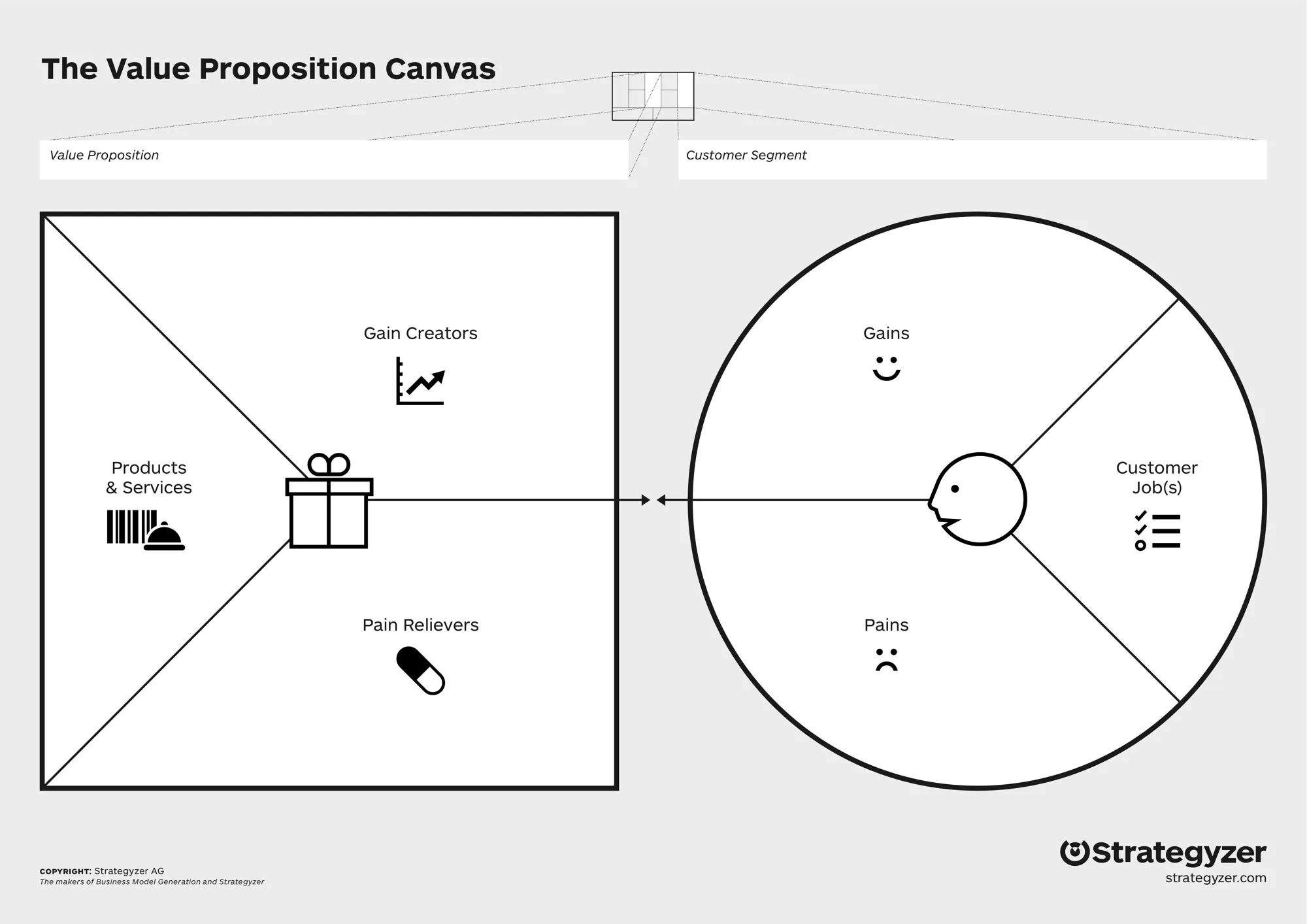Jobs-To-Be-Done is such a great methodology to find very deep insights from customers and craft amazing customer experiences but is buried in a lot of theory.
The goal of this newsletter is to give you everything you need to start getting the benefits of Jobs-To-Be-Done right away.
What is Jobs-To-Be-Done?
Jobs-To-Be-Done (JTBD) is a term coined by Clayton Christensen in his book, The Innovator’s Solution, in 2003.
It’s a theory to understand why a customer buys a product.
With JTBD, the point is to realize what is the context of the situation potential customers are in before they buy a new product and the profound motivation they have to progress towards a new solution.
Customers don’t just buy products, they have a desired outcome they want to fulfill and are looking to hire a solution to complete it in the most painless way possible.
What are the benefits of JTBD?

If you understand exactly what the customers are trying to achieve — their jobs — you will be able to build an adequate experience, to fit their needs, and remove their current pains.
Product. You will be able to ship the right features, tweak what is painful, and get a product that gets the job done.
Marketing & Sales. You will be able to understand what are the best channels to promote on, how to reach out to them, and how to get them to try your product.
Customer Success. Knowing the situation and motivation of your customers builds empathy. And relationships thrive with empathy.
JTBD gives you an understanding of your customers that can be shared across the whole company. It aligns everyone on the vision and makes the job of the CEO much easier.
JTBD Example
Basecamp
Basecamp is using JTBD to create an amazing experience for their customers.
They have been using the words of their customers in their narrative for a long time. And they were even prompt to adapt it when COVID-19 hit when many companies were forced to go remote.

JTBD Timeline (Series of Progress)
In order to understand customers, you need to retrace the path they took that lead to the progress they wanted.
Customers just don’t wake up one morning and buy a new product. It’s a whole journey before they are able to confidently act.
And it’s exactly this journey that JTBD tries to uncover.
- First thought: customers start to feel frustrated with the current way they are doing their jobs.
- Passive looking: comes a time where they will start to notice new possible solutions as they passively browse the web.
- Active looking: at some point, the frustration is too hard to bear and they will actively look for a new solution.
- Deciding: then arrives the time to decide which solution to use. In the case of B2B SaaS, they also start to use the product with a free trial or freemium version to help them decide.
- Consuming: they decided to buy your product and continue their experience.
- Satisfaction: and finally, they are satisfied with the progress they made (or not).
This timeline works best for your current customers, but it also works for potential customers. They might not be at the end of the timeline yet, but they can have precious feedback to give anyway.
JTBD Forces of Progress (May the force be with you!)
Like most journeys, it’s not a walk in the park and some forces might hold your customers to move forward.
- Anxiety of the new solution: making the right choice isn’t easy, especially when there’s a lot of possible choices. You probably already have encountered this feeling yourself.
- Habit of the present: it’s hard to stop old habits and start new ones. It’s a powerful force that is hard to overcome.
But there are also forces that will keep motivating them to continue.
- Push of the situation: There’s a problem with the current situation and they want to get away from it.
- Pull of new solution: they are attracted by a new product.
If you can understand what are those forces and how to convince potential customers to overcome them, they will be far more likely to buy your product.

JTBD Survey & Interview Questions
The only way to find all those insights is by listening to customers.
Face-to-face interviews are by far the best way to get the most profound feedback but it’s rarely practical.
If you have to do customer interviews remotely, prefer video calls. Visual cues are part of the communication and will help you conduct the interview.
Surveys are a good way to get more insights faster. You won’t get the quality you get with interviews, but it’s still very useful.
By asking the right questions, you can recreate the series of progress for each of the customers you interview. I’ve compiled some questions you can use in surveys and questions for each stage of the timeline.
First Thought
- What tools were you using to [get the job done] before [Product]?
- Tell me about that. What worked well, and what didn’t?
Passive Looking
- What was going on in your world that compelled you to look for something different?
- What was the most frustrating part of that situation?
Active Looking
- Once you figured out you wanted to make a change, how much research did you do to find the right solution?
- How did [Product] come into the picture?
Deciding
- What were some of the other tools you tried?
- Were you the only one on your team looking for something else at the time?
Consuming
- What happened when you tried [Product] that convinced you it was the right choice?
- Did you have any doubts?
Satisfaction
- Now that you’re using [Product] regularly, what are you able to do that you weren’t before?
- How has that impacted your team’s goals or performance?
How to conduct a successful JTBD interview?
The questions are important, but there are also some important do’s and don’ts to successfully get the right insights from interviews.
Start by making them feel comfortable. The beginning of an interview is stressful but after a few minutes, everyone is more relaxed. They will talk about what they like and dislike so read their emotions and keep them engaged.
Tell the people you are interviewing that it is like a documentary. All the details are important even if they are small or weird.
Keep the stakes low. The people you interview need to feel free to criticize you and invalidate your assumptions.
Be neutral. The sooner you talk to your clients, the easier it will be to not be subjective. Avoid cognitive biases.
They are not here to request features. If they derail and keep asking for features, gently get them back on the right track.
Don’t rush. The goal is to listen! Like a conductor, you should get your customers to say what you want with minimal indications. Don’t press them nor ask too many questions in a small interval of time.
Don’t stress if you lose the thread. If you are lost and don’t know where you are, you can go back to the start.
Record the interview. Maybe some people are able to conduct interviews properly while taking notes, but it’s generally something that many people struggle with (including myself). Record the interview, make a transcript, and highlight insights.
How to invite people for the JTBD interview?
Let’s make something clear — as it’s a question I often get asked — you will be able to find customers to interview as long as you have customers that like your product.
If you can’t get anyone to interview, there might be something seriously wrong! There are probably obvious changes before you need to start interviewing customers.
If you don’t have any customers yet, find potential customers through your network.
I usually use a template like this one for my emails:
Hey [Name],I would love to understand how you use [Product] in a short 30-40 minute video call.We are resolved to give you the most fulfilling experience and these interviews will permit us to improve [Product].You can book a call whenever it is ideal for you by clicking on this link: [Your Calendly URL]If you agree to this call, we’ll thank you by giving you [Incentive].Thanks![Your Name][Your Title][Your Company]
Reduce friction as much as possible. Calendly is a great way for your customers to book the call when they are available without any back-and-forth.
Something I also like to do is to get them a few options concerning the software. I got customers opposed to Zoom in the past and were happy to have the choice to use another application.
If you really don’t know who you should send this email to, run a survey first and I’m sure you will find customers you want to interview this way.
How to optimize participation for a JTBD survey?
First things first, you are not looking at quantity with JTBD surveys but quality. Therefore, it’s okay if the survey takes more than 5 minutes to fill out.
Of course, you shouldn’t fall into the opposite trap and add too many open-ended questions to the survey.
Choose between 5 and 10 questions from this article, add them to a survey in the application of your choice and you’re ready.
Be sure to be able to link survey responses to customers. Segmentation is essential to the comprehension of the insights.
Here’s the email I use to ask customers to participate in a survey.
Hey there [Name],I’m reaching out to our beloved customers to get a stronger sense for how people like you are using [Product].Any chance you’d be up for sharing your experiences using [Product]? It’s an easy 5-minute survey. No wrong answers!Your feedback will help us make [Product] more useful for you in the future.[Button: Start The Survey]Thank you so much![Your Name][Your Title][Your Company]
Email templates are great to start with, but you should absolutely customize them. Your company has a specific culture and way of addressing their customers, and you need to use that.
You can get more survey practice in my article on SaaS surveys
How to use customer insights from surveys & interviews?

Narrative. There’s no better way to craft the right positioning and messaging than JTBD. All the work done to understand why they would buy your product gives you the exact words they are looking for to describe their pains and dreams.
Case Studies. Interviews can be transformed into amazing case studies. The series of progress you identify is something potential customers will resonate with.
Feature Prioritization. As you get a better sense of the urgency customers might have concerning some of their pains, you will have an easier job prioritizing features.
Onboarding. This is such a crucial moment that makes or breaks the decision of so many customers, and now you have all the questions you need to understand what could be the pains and forces that might stop customers from successfully onboarding.
SEO. Once you understand the pain points of your customers and what they are looking for during their passive looking (TOFU), you will be able to find the best keywords to use for your content.